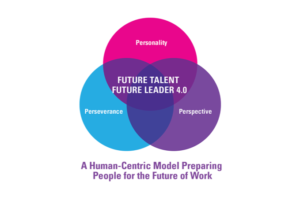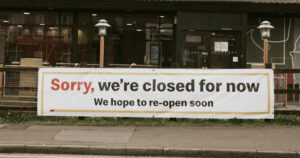
The values that drive our decisions are the most intimate part of personality. When we speak of values, we do not refer to universal moral principles, such as integrity, respect, or solidarity, but more specific qualities that are shaped by culture, upbringing, and more.
As pillars in our decision-making, our core values and beliefs determine the type of environment we strive to cultivate at work, the people with whom we prefer to associate, and the kinds of attitudes and behaviors we find distressing or dislikable. Hogan’s Motives, Values, Preferences Inventory (MVPI) measures several highly influential values on 10 scales: Recognition, Power, Hedonism, Altruistic, Affiliation, Tradition, Security, Commerce, Aesthetics, and Science.
The Leader in Times of Crisis Program
As part of the Leader in Times of Crisis program, Hogan’s strategic partner Thuoper collaborated with the Bogotá Chamber of Commerce to study the personality traits of more than 200 CEOs in Colombia. The program’s main objective was to help leaders achieve a higher level of strategic self-awareness, understand how to manage the crisis, and emerge stronger than before.
As part of the program, the CEOs completed Hogan’s personality tests — the Hogan Personality Inventory, the Hogan Development Survey, and the Motives, Values, Preferences Inventory — and attended a webinar during which Liliana López, CEO of Thuoper and expert in organizational leadership, explained the methodology and key personality characteristics for handling crisis effectively.
Subsequently, Thuoper’s research and development team analyzed the CEOs’ personality test results and found important patterns between their results and their companies’ economic sectors. This article, the third in a three-part series, will focus on how the CEOs scored on the MVPI.
Financial
In the financial sector, we found Power and Altruistic to be the CEOs’ main values or motivators. The Power scale refers to the desire for success, achievement, and control. This is an unsurprising finding in a sector where status is valued. On the contrary, it was surprising to find Altruistic to be one of the top scales in this sector. The Altruistic scale refers to the desire to help others and contribute to the betterment of society. This finding refutes the general perception that the financial sector is one of the most greedy and least altruistic; its CEOs demonstrate interest in the well-being of others.
Industrial
What we found in the industrial sector was expected. Altruistic, Security, and Commerce were the main MVPI scales on which CEOs scored high. Many companies in this sector demonstrate a growing interest in care for the environment and dialogue with impacted communities, suggesting altruism in the sector’s leaders. Security is the scale that refers to the need for stability, safety, and the minimization of risks, which is totally relevant for this sector, since it poses greater risk to the physical well-being of its employees. Commerce is about interest in making money, making investments, and finding business opportunities. The industrial sector is one of the largest sectors and is among those hit hardest by the COVID-19 crisis, so the ability of its leaders to focus on financial results and generate new business to survive is vital.
Health
CEOs in the health sector, one of the most relevant at this time, scored high on Recognition, Power, and Altruistic. The importance of Recognition, which has to do with the desire for public attention, approval, and congratulations, is not surprising. In a sector where competition is high, the circumstances of the pandemic only increase the need for organizations to maintain good reputations. Like the financial sector, the health sector is characterized by high social standards, so that the CEOs tended to score high on the Power scale was not a surprise either. However, balance is maintained with the CEOs’ high scores on Altruistic, since the ultimate goal of a company in this sector is the collective good.
Services
In the services sector, CEOs tend to value Security and Commerce. This sector traditionally has been very conservative in its proposals to the market, hence the value for security. But obviously, this is also one of the sectors hit hardest economically by the pandemic, so the CEOs’ high scores on Commerce, in combination with Security, suggest a desire to stay in a known area but with the mentality of searching for monetization opportunities.
Technology
As for the technology sector, Altruistic and Security were the scales with the most high scores. This goes hand in hand with the widespread perception that companies in this sector are creating technology beneficial to society and vulnerable populations. The CEOs’ scores on Security are not a surprise, either — the leaders of this sector must be constantly alert to possible cyberattacks, which happen more often than we think.
Textiles, Transportation, and Tourism
The textiles sector did not offer any new impressions regarding CEOs’ highest values, in general. Altruistic, Security, and Commerce represent the most recurring values among the leaders whose results we analyzed. The same happened with the transportation and tourism sectors, although the latter showed an important and interesting difference: the leaders of this sector had Aesthetics among their highest values. The Aesthetics scale refers to the need for self-expression and concern for the quality and appearance of work products. Bringing this definition to the reality of this industry, we can conclude that one of the things that most interests the leaders of the tourism sector is keeping their hotels or tourist sites attractive, even during the pandemic.
*This post was authored by Sara Ruiz, Research and Development Talent Management Model Lead at THUOPER, Hogan’s authorized distributor in Colombia.












